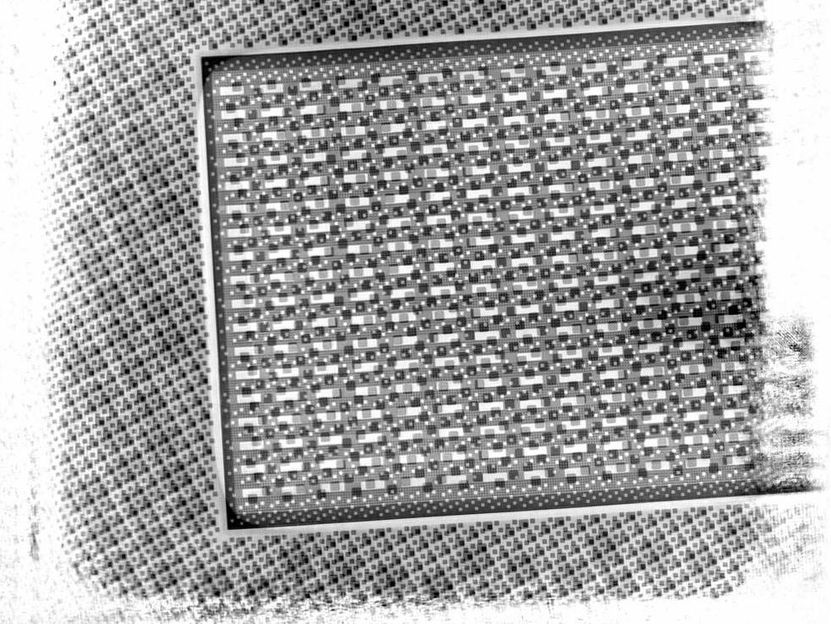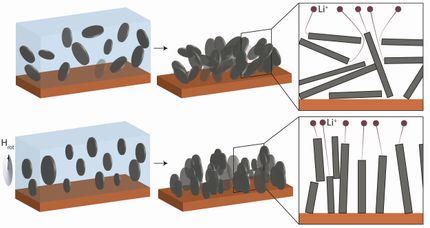How nanoparticles flow through the environment
carbon nanotubes remain attached to materials for years while titanium dioxide and nanozinc are rapidly washed out of cosmetics and accumulate in the ground. Researchers from the National Research Programme "Opportunities and Risks of Nanomaterials" (NRP 64) have developed a new model to track the flow of the most important nanomaterials in the environment.

dimitrisvetsikas1969, pixabay.com, CC0
How many man-made nanoparticles make their way into the air, earth or water? In order to assess these amounts, a group of researchers led by Bernd Nowack from Empa in St. Gallen has developed a computer model as part of the National Research Programme "Opportunities and Risks of Nanomaterials" (NRP 64).(*) “Our estimates offer the best available data at present about the environmental accumulation of nanosilver, nanozinc, nano-tinanium dioxide and carbon nanotubes”, says Nowack.
Cosmetics and tennis racquets
In contrast to the static calculations hitherto in use, their new, dynamic model does not just take into account the significant growth in the production and use of nanomaterials, but also makes provision for the fact that different nanomaterials are used in different applications. For example, nanozinc and nano-titanium dioxide are found primarily in cosmetics. Roughly half of these nanoparticles find their way into our waste water within the space of a year, and from there they enter into sewage sludge. Carbon nanotubes, however, are integrated into composite materials and are bound in products such as which are immobilized and are thus found for example in tennis racquets and bicycle frames. It can take over ten years before they are released, when these products end up in waste incineration or are recycled.
39,000 metric tons of nanoparticles
The researchers involved in this study come from Empa, ETH and the University of Zurich. They use an estimated annual production of nano-titanium dioxide across Europe of 39,000 metric tons – considerably more than the total for all other nanomaterials. Their model calculates how much of this enters the atmosphere, surface waters, sediments and the earth, and accumulates there. In the EU, the use of sewage sludge as fertiliser (a practice forbidden in Switzerland) means that nano-titanium dioxide today reaches an average concentration of 61 micrograms per kilo in the affected ground.
Knowing the degree of accumulation in the environment is only the first step in the risk assessment of nanomaterials, however. Now this data has to be compared with ecotoxicological test results and the statutory thresholds, says Nowack. A risk assessment has not been carried out with his new model until now. Earlier work with data from a static model showed, however, that the concentrations determined for all four nanomaterials investigated is not expected to have any impact on the environment.(**)
But in the case of nanozinc at least, its concentration in the environment is approaching the critical level. This is why this particular nanomaterial has to be given priority in future ecotoxicological studies – even though nanozinc is produced in smaller quantities than nano-titanium dioxide. Furthermore, ecotoxicological tests have until now been carried out primarily with freshwater organisms. The researchers conclude that complementary investigations using soil-dwelling organisms is a priority.
Original publication
T. Y. Sun et al.; "Dynamic probabilistic Modelling of Environmental Emissions of Engineered Nanomaterials"; Environmental Science & Technology; 2016
C. Coll et al.; "Probabilistic environmental risk assessment of five nanomaterials (nano-TiO2, nano-Ag, nano-ZnO, CNT, and fullerenes)"; Nanotoxicology; 2016
Original publication
T. Y. Sun et al.; "Dynamic probabilistic Modelling of Environmental Emissions of Engineered Nanomaterials"; Environmental Science & Technology; 2016
C. Coll et al.; "Probabilistic environmental risk assessment of five nanomaterials (nano-TiO2, nano-Ag, nano-ZnO, CNT, and fullerenes)"; Nanotoxicology; 2016
Topics
Organizations
Other news from the department science
These products might interest you

NANOPHOX CS by Sympatec
Particle size analysis in the nano range: Analyzing high concentrations with ease
Reliable results without time-consuming sample preparation

Eclipse by Wyatt Technology
FFF-MALS system for separation and characterization of macromolecules and nanoparticles
The latest and most innovative FFF system designed for highest usability, robustness and data quality

DynaPro Plate Reader III by Wyatt Technology
Screening of biopharmaceuticals and proteins with high-throughput dynamic light scattering (DLS)
Efficiently characterize your sample quality and stability from lead discovery to quality control

Get the chemical industry in your inbox
By submitting this form you agree that LUMITOS AG will send you the newsletter(s) selected above by email. Your data will not be passed on to third parties. Your data will be stored and processed in accordance with our data protection regulations. LUMITOS may contact you by email for the purpose of advertising or market and opinion surveys. You can revoke your consent at any time without giving reasons to LUMITOS AG, Ernst-Augustin-Str. 2, 12489 Berlin, Germany or by e-mail at revoke@lumitos.com with effect for the future. In addition, each email contains a link to unsubscribe from the corresponding newsletter.
Most read news
More news from our other portals
Last viewed contents
Diatomic_molecule
Huntsman to Increase MDI and MDI-based Systems Prices in Europe
Category:International_Technology_Roadmap_for_Semiconductors_lithography_nodes
Clomifene
Lyonsite
Arctite




























































